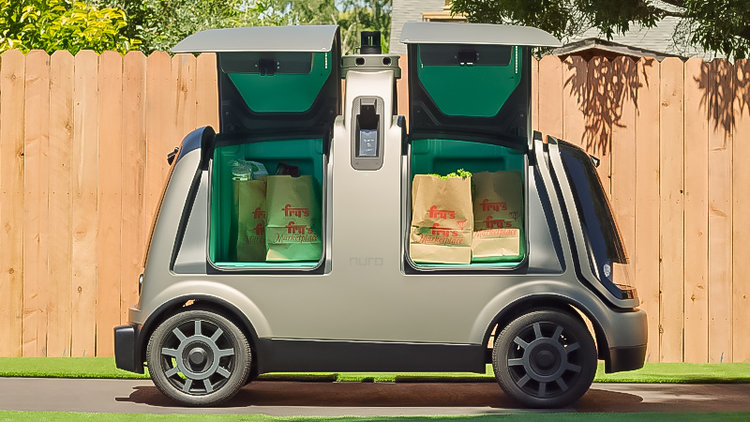How Driverless Are the Nuro Delivery Cars?
Nuro, a startup company operating in the self-driving market, has just launched their second robot delivery service in Houston, Texas. In 2018, the company partnered with grocery chain Kroger to test out same-day robot delivery services in Scottsdale, Arizona. Judging from the launch of the same service this year, it can be surmised that tests went well.
The service Nuro is offering is intended to help people save time. It’s a truth universally acknowledged that the demand of modern-day living has left many struggling to balance life and work. Services like this online grocery delivery from Nuro and other companies that still employ the “with driver” model are solutions to make life just a little bit easier.
While this kind of service is innovative, just how driverless are the Nuro delivery cars? Before answering that question, it helps to look at the path that led to this service being launched.
The Road to Self-Driving Deliveries
Nuro was founded by two former Google engineers, Jiajun Zhu and Dave Ferguson. Zhu served as the principal software engineer of Waymo, the self-driving car project of Google. Ferguson joined that team in 2011, working as its principal computer vision and machine learning engineer.
In 2016, the two ex-Google employees founded Nuro. They were able to raise $92 million with the help of Greylock Partners and Gaorong Capital.
Nuro partnered with Kroger in 2018 to offer same-day deliveries. The plan was to use the self-driving technology they developed for delivering local goods and services, including groceries, dry cleaning, or anything that can fit into the vehicles being used by the company.
Kroger has more than 2,500 stores around America and the goal is to reach most of them. Although Kroger already has a same-day delivery service, the self-driving service is intended to reach areas where that service isn’t provided.
Out of the many possible items that could be delivered by a self-driving vehicle, groceries sounded the most interesting. After all, many customers are already turning to online deliveries so why not up the stakes a little with robot delivery services?
A pilot program was launched months after partnering with Kroger. The chosen city was Scottsdale, Arizona, which has already seen a slew of other autonomous testing. Jim Lane, the city’s mayor, welcomed the use of his city as a testing bed, especially since it’s one that could potentially improve the life of the city’s residents.
The test store for the driverless delivery service was Fry’s Food and Drug. Customers who wanted groceries could place their orders through the grocer’s website or the mobile app. While the service doesn’t charge for placing an order, customers have to pay a $5.95 delivery rate.
Instead of using their custom self-driving vehicles for the pilot program, Nuro tested with a self-driving fleet from Prius. The reason for this was to ensure the system was able to learn enough to help them make the custom version better.
Nuro’s self-driving vehicle is called R1, which resembles a toaster, and can fit in six grocery bags in each of its two compartments.
In 2019, SoftBank Vision Fund gave Nuro $940 million and it didn’t take long for the company to launch a self-driving service in their second market. Kroger is still Nuro’s grocery partner.
Ferguson, Nuro’s co-founder, saw how enthusiastic the customers were when the pilot program launched in Arizona. With Texas equally supportive of self-driving technology, it made sense to provide services there.
A Word about Driverless Delivery
Nuro’s plans for their self-driving technology is to use it for the last mile of delivery. Unlike people-powered deliveries, customers actually have to come to the curb to get what they ordered.
The R1 vehicle developed by the company cannot fit a human being inside. It is smaller than a sedan and shorter than your usual car. In other words, it is truly a self-driving vehicle. Nuro has built six of these vehicles and plans to build about 50.
When we think of driverless, we often think that it is given a set of instructions and left go to fulfill those. That is not the case with Nuro.
Although the R1 vehicles are indeed without drivers, Nuro uses chase vehicles, which have actual drivers at the wheel, to follow the R1 as it makes deliveries. The chase vehicle drivers are also aided by remote technology so they know the whereabouts of the robot delivery vehicles.
While the R1 vehicle can drive itself without human assistance, following it with a chase vehicle acts as assurance that the automated car is functioning as intended and that help is on its way should anything happen.






